Roadside Wisdom
The wry, gentle wisdom of Bhutan’s roadside signs make every drive an opportunity to reflect on the journey of life, and quite possibly reduce traffic accidents as a result.
The taxi weaves its way along a slender, snaking road in an undulating dance of acceleration and deceleration, swerving around sleeping dogs and wandering cows. It overtakes a weighted lorry on a sharp curve, horn honking, only narrowly avoiding an oncoming Land Cruiser. We’re travelling the Western Highway between Paro and Thimphu, one of Bhutan’s mellower drives.
Something on the side of the road catches the driver’s attention, and he instinctively slows down.
Nature does not hurry, yet everything is accomplished
Around the next blind curve, there is another sign.
Life is a journey. Complete it
‘You find yourself paying closer attention to the road,’ says Chencho Dorji, the taxi driver, looking in anticipation for the next little nugget of wisdom. ‘I used to drive 90 kph (56 mph) on this road,’ he admits, ‘but when I see the signs, I remember to slow down. Now I only go 50–60 (31–37 mph).’
Alert today, alive tomorrow
Speed is the knife that cuts the life
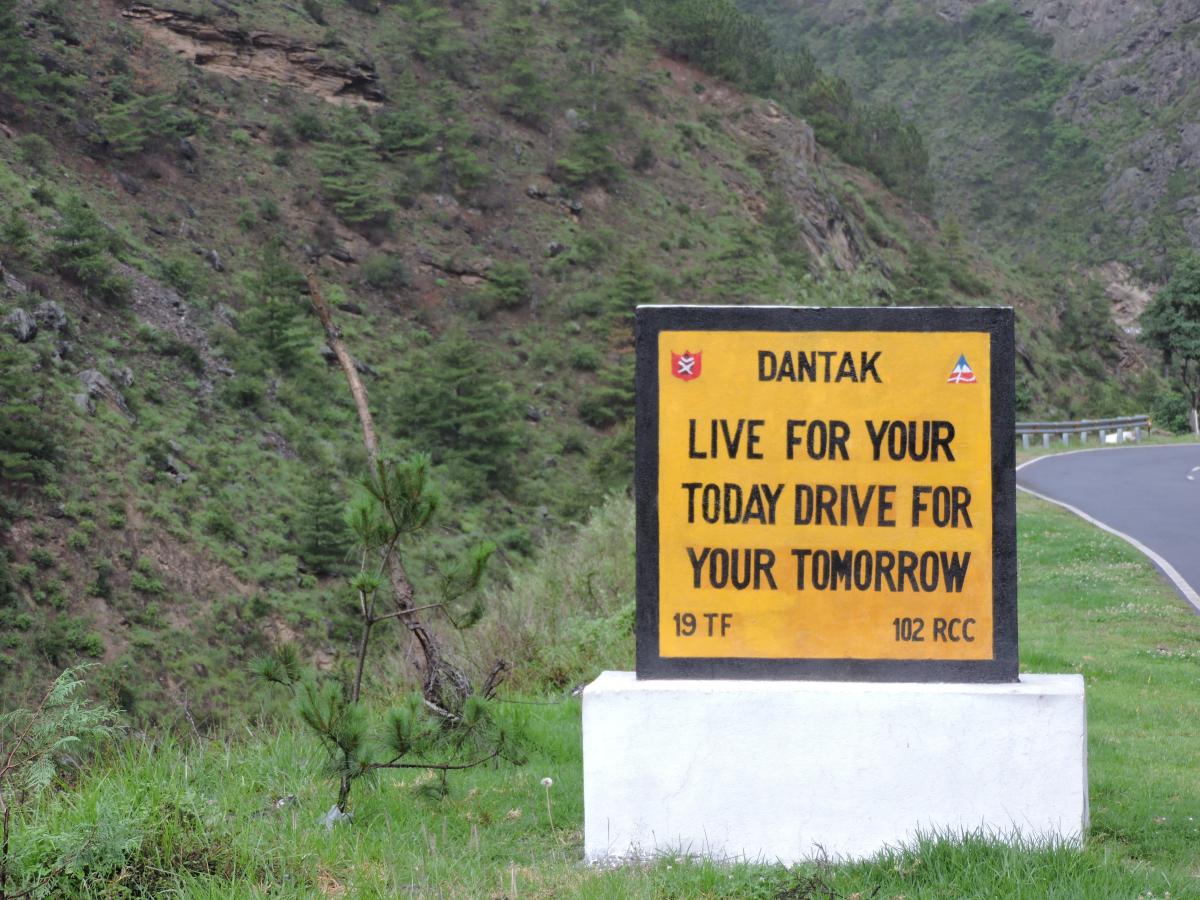
These amusing yet subtly philosophical statements speak important truths to drivers who pause to ponder their significance. ‘People like the signs,’ says Chencho Dorji. ‘They are funny, but they make you think. Whenever I’m driving a long way I am always looking for these signs.’ In a country refreshingly free of roadside advertising, the signs break the monotony of long road trips, offering advice that ranges from practical to marital, environmental to philosophical, beckoning drivers to look beyond the thrill of speed on curvy mountain roads.
If you are married, divorce speed
There is a clear strategy behind these seemingly lighthearted road signs. ‘We are using humour to convey a subtle but important message,’ says Brigadier PKG Mishra. ‘No matter where in the world you’re from, humour is something that is easily understood, appreciated and remembered.’
Brigadier PKG Mishra is the Chief Engineer for Dantak; a project operating under India’s Border Roads Organization (BRO). Since 1961, Dantak has built over 1,600 km (990 mi) of blacktop roads and 5 km (3.1 mi) of bridges throughout Bhutan. These roads, while cutting through some of the world’s most inaccessible terrain, are not innovative in their own right, but the witty signs dotting the roadsides do manage to steal attention away from the epic scenery, all while serving up bite-sized life lessons.
‘Our aim is to ensure the safety of the commuters, and we believe [the signs] make their journey more enjoyable.’ Brigadier PKG Mishra
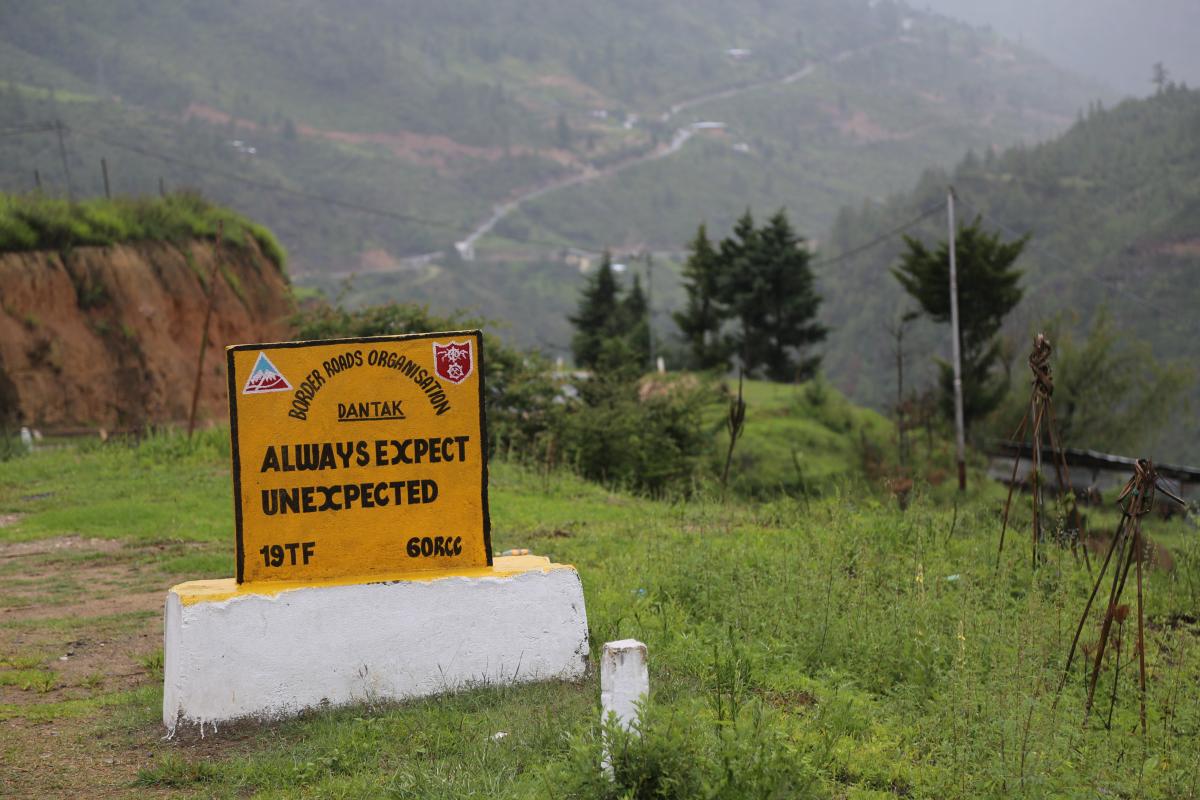
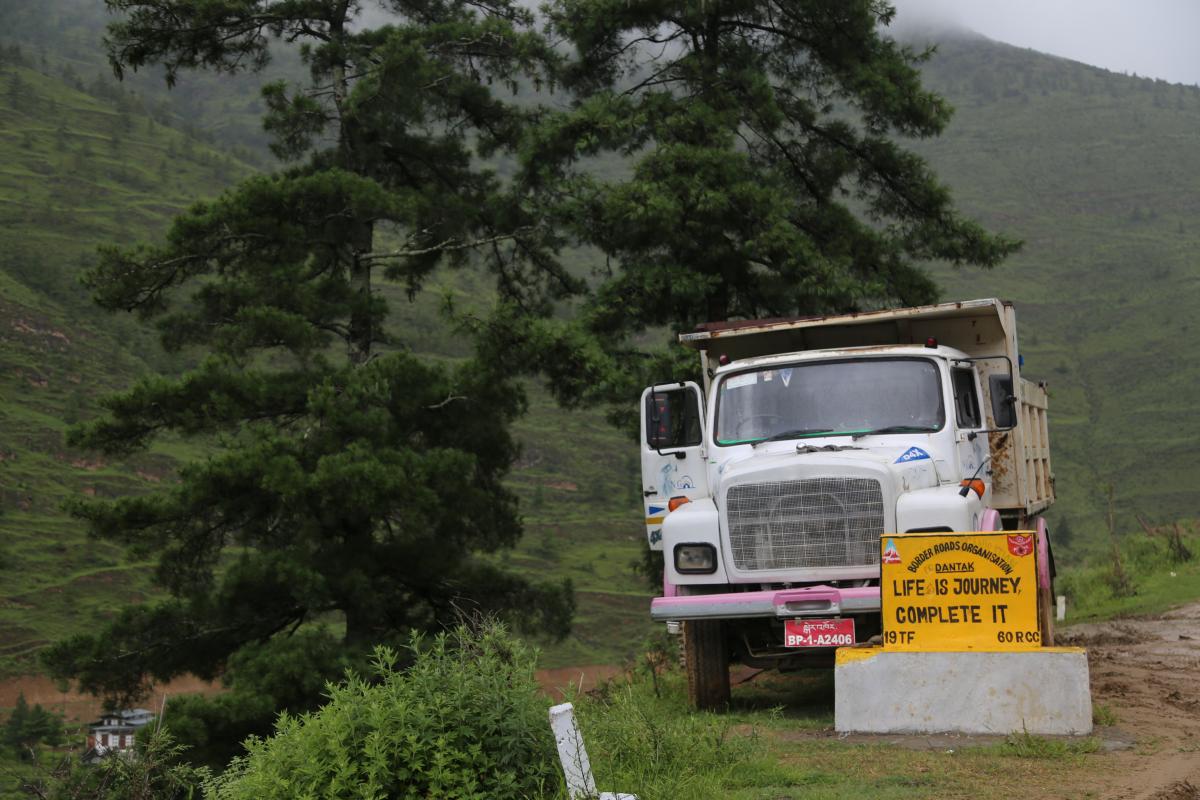
As a division of the Indian Army’s Corps of Engineers, BRO builds and maintains transportation networks along India’s borders and throughout the neighbouring countries of Bhutan, Myanmar, Afghanistan and Tajikistan. The organisation specialises in building roads that seem to defy their inhospitable locations, spanning glacial rivers and clinging to the bellies of the Himalayas’ highest ranges.
Before 1960, Bhutan’s isolated valleys were connected by a series of rudimentary footpaths and mule trails. While the Industrial Revolution and two World Wars transformed the outside world, Bhutan remained completely insulated from these developments. It wasn’t until 1958, in the wake of China’s takeover of Tibet, that Bhutan’s third king, Jigme Dorji Wangchuck accepted Prime Minister Pandit Jawaharlal Nehru’s offer of economic and military assistance, and together the leaders agreed to open Bhutan to the world.
‘Roads are the most primitive way of developing a country,’ says PKG Mishra, and in April, 1961 Dantak broke ground on the first of Bhutan’s road networks, connecting the country’s remote villages and marking the beginning of a new era of infrastructure and information for the tiny kingdom. Later, as road connectivity increased, Dantak spearheaded many other projects including microwave and telecommunication links, roads and amenities for the Chhukha Hydropower Project, Paro airstrip and helipads, Deothang hospital and Sherubtse College. ‘Dantak is not merely a road construction agency,’ PKG Mishra reflects. ‘Dantak is a way of life in Bhutan.’
BRO operates nearly 33,000 km (20,500 mi) of roads throughout the hilly terrains of India’s northern borders, and all along these winding roads commuters are greeted with signs urging drivers to stay alert, drive responsibly, and appreciate life’s journey along the way.
There are more than 15 traffic fatalities per 100,000 people annually in Bhutan (population 742,700), while the figures are 13.6 in Bangladesh (population 171,700,000) and 14.2 in Pakistan (population 202,971,000).
This clever use of humour to encourage the safe use of their roads sets BRO apart from other transportation agencies. The signs are an integral part of the organisation’s culture, says Mishra, and in a way have come to serve as a sort of trademark. They fall under the category of ‘roadside fixtures’, and cost estimates for the materials needed to build them are always factored into the initial budget planning for all BRO roads.
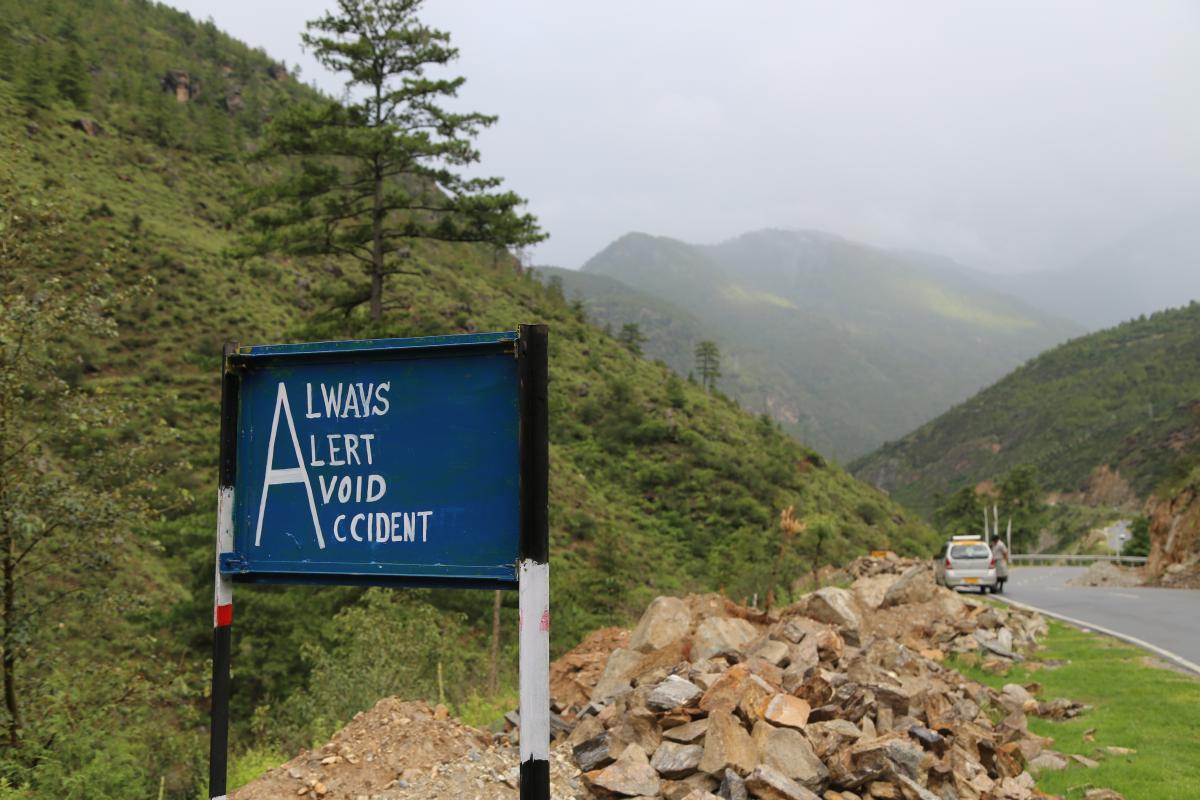
There is no one person responsible for writing these slogans and no formal approval process for the content, nor is it possible to say for sure who first devised this novel safety strategy. ‘It is your own innovativeness, your own ingenuity, your own initiative, and your own mental calibre that help you come up with these types of things,’ says Mishra. He does try to ensure that no signs are repeated on the same stretch of road, though some of his favourites can be found on several of Bhutan’s highways. Dantak is currently working to add Dzongka text to the signs so that Bhutanese drivers who don’t speak English can enjoy them too.
Bhutan has seen a huge spike in the number of vehicles in recent years, despite heavy taxes on automobile imports and fuel. The Bhutan Broadcasting Service (BBS) reports that there are 74,612 vehicles in the country today, approximately one car for every ten people. Compared to its larger neighbours, it has relatively few drivers, yet Bhutan ranks high in incidents of traffic fatalities. According to the World Health Organization’s 2015 report on road safety, ‘Bhutan has a higher probability of road accident casualties as compared to countries like Pakistan and Bangladesh,’ both of which have populations more than 200 times greater. Disregard for speed limits, seat belt usage and drink-driving rules account for most of the fatal accidents on Bhutan’s roads.
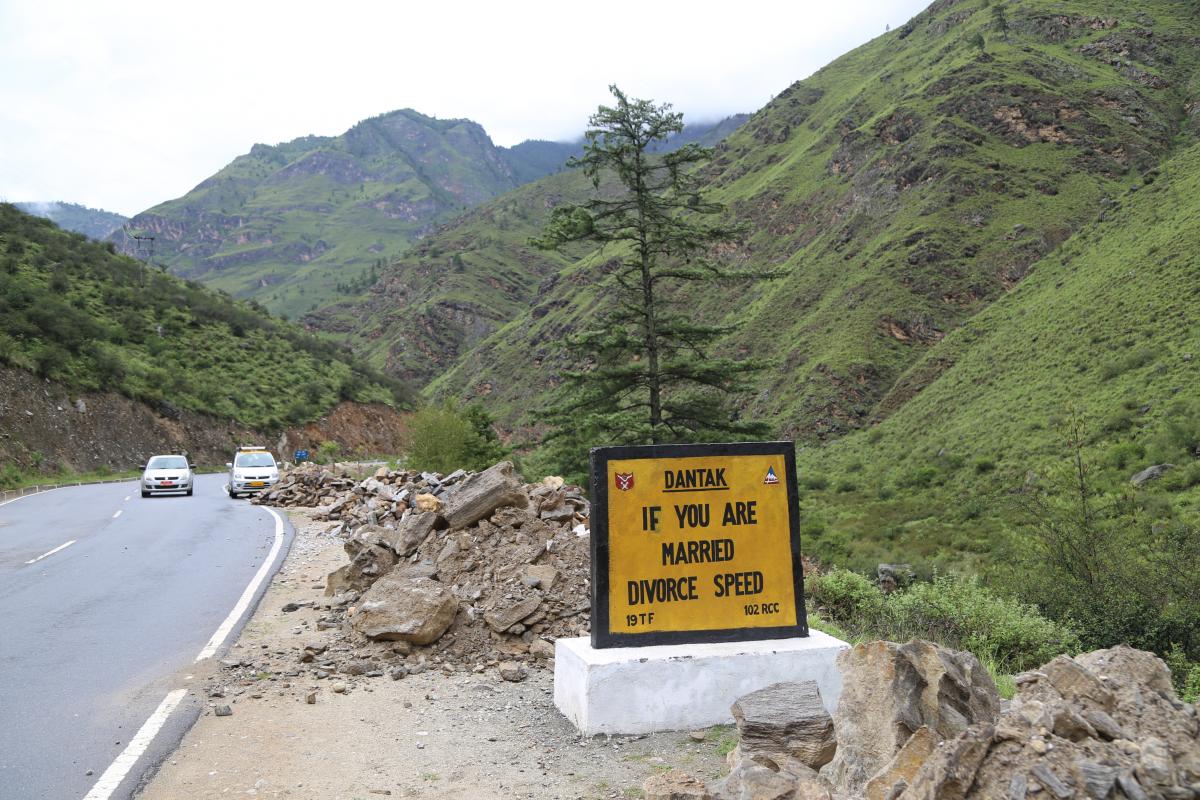
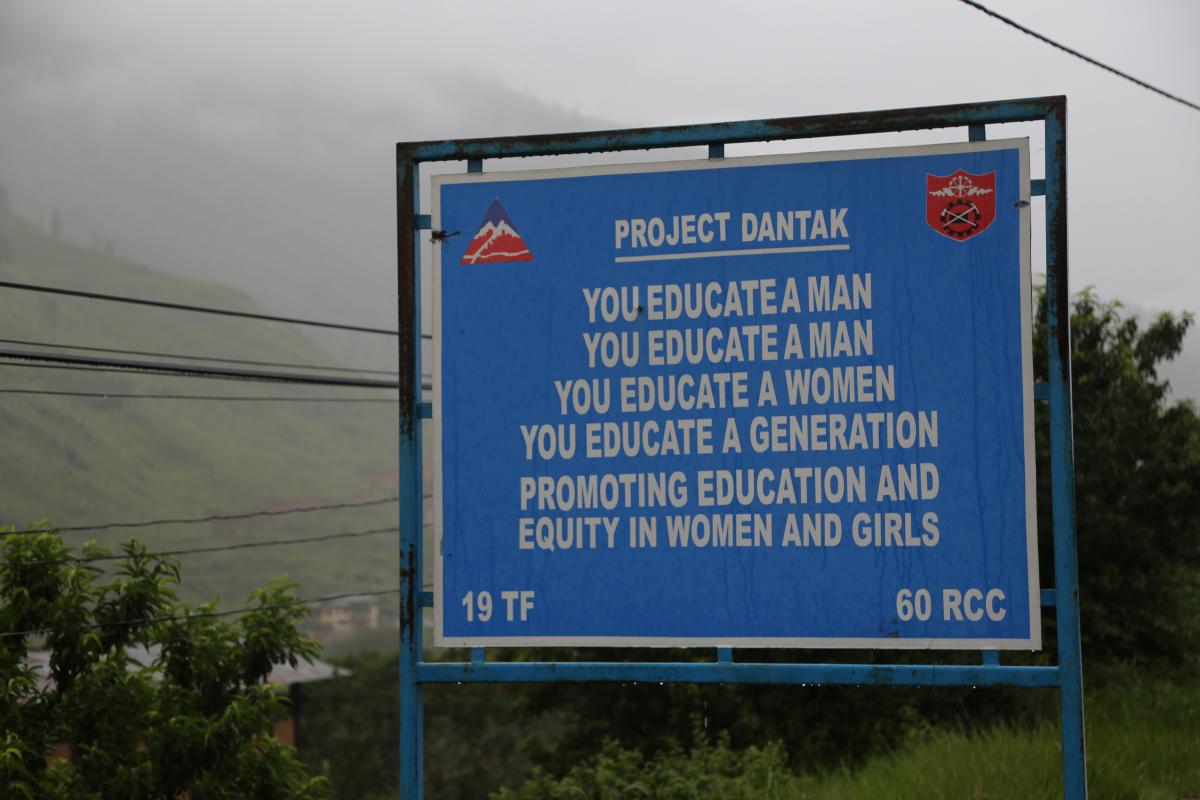
After whiskey, driving is risky
Peep peep, don’t sleep
The purpose of any road is to facilitate a journey, Mishra explains; they are a means of getting from one place to another. It is the responsibility of Dantak, he says, ‘not only to provide merely a physical means to achieve that end, but also to ensure that the roads are used properly and safely, so that the user makes it to his desired destination in a safe way.’ It is the responsibility of the driver, however, to take heed of the warnings.
While it would be difficult to prove whether Dantak’s signs are actually improving safety statistics, it does seem that drivers notice and appreciate their messages.
In the case of at least one taxi driver the signs changed the way he drives, and for that alone, this passenger is very grateful. So remember, please,
Be gentle on my curves

